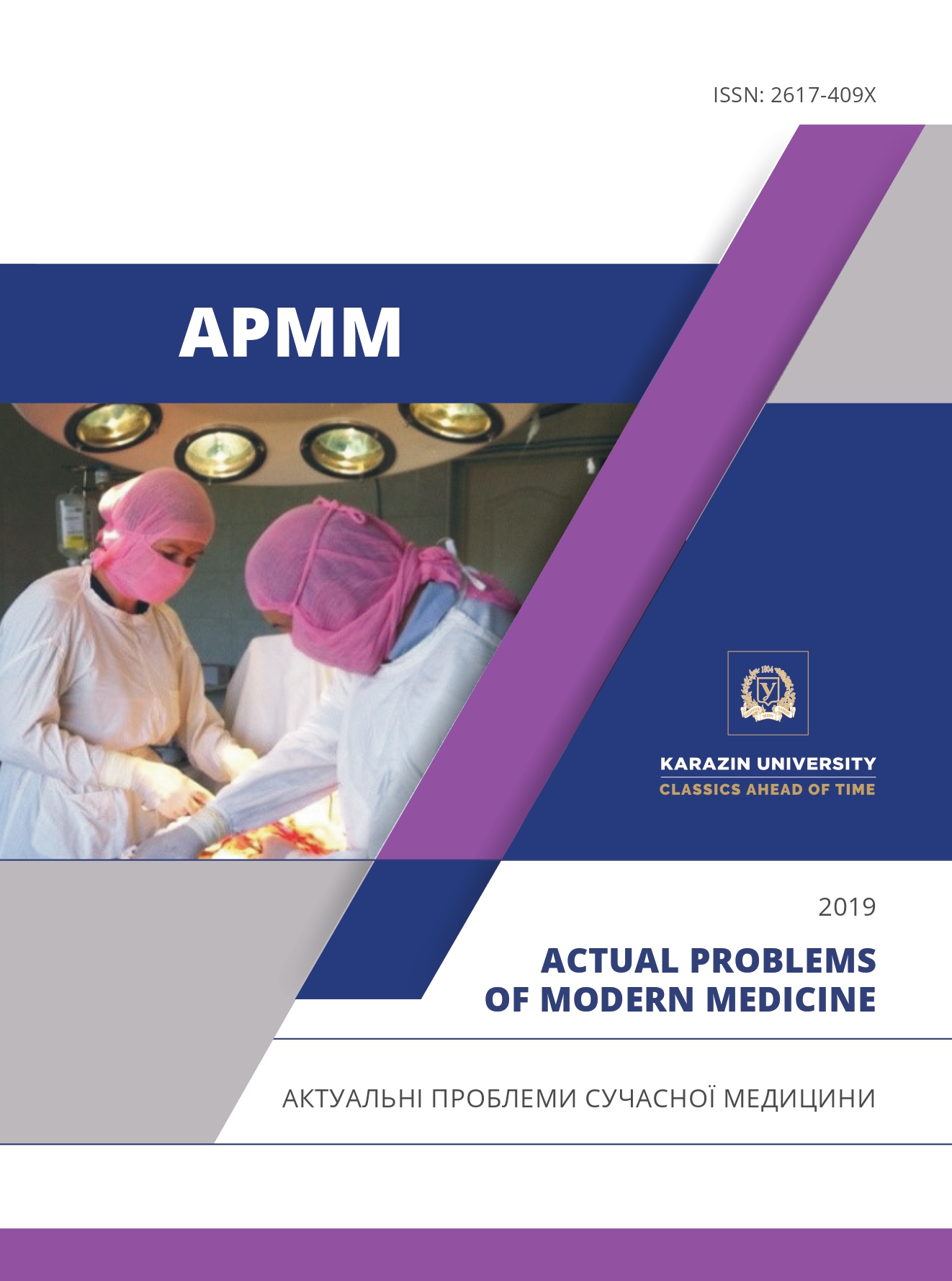Адаптаційні можливості серцево-судинної системи у підлітків з незапальними захворюваннями міокарда з урахуванням функціонування правого та лівого шлуночків
Анотація
Адаптація серцево-судинної системи до фізичного навантаження передбачає розвиток функціональних або структурних змін, які повинні забезпечити найбільш ефективне і економне витрачання енергії при м'язовому скороченні. Найбільш вивчені дані реакції у осіб, що займаються різними видами спорту. Метою нашого дослідження було вивчення функціональних змін серця з урахуванням функціонування правого і лівого шлуночків серця і адаптаційних можливостей серцево-судинної системи у дітей з незапальними захворюваннями міокарда. Обстежено 62 пацієнта з незапальними захворюваннями міокарда, середній вік яких був 14,56 ± 0,24 років. Групу контролю склали 41 практично здорових їхніх однолітків. Функціональний стан міокарда оцінювали за результатами ультразвукового доплерівського дослідження серця в "М" - і "В" - режимах, а також в режимі постійно-хвильового і кольорового сканування конвексним датчиком за стандартною методикою. Для вивчення толерантності до мінімальному фізичному навантаженні і її впливу на стан серцево-судинної системи у дітей проводився тест шестихвилинної ходьби. Для оцінки функціональної напруженості серцево-судинної системи до і після тесту шестихвилинної ходьби розраховувалися наступні вегетативні індекси: коефіцієнт витривалості за формулою А. Квааса і подвійне твір. У стані спокою розраховувалися вегетативний індекс Кердо і адаптаційний потенціал. В результаті дослідження отримано, що у дітей з патологією міокарда відзначається напруга механізмів адаптації серцево-судинної системи, що супроводжується ослабленням функціональних її можливостей і збільшенням роботи серцевого м'яза в стані спокою. Відбувається це на тлі зниження функціонування лівого шлуночка і збільшення функціонування правого шлуночка серця. Супроводжуються дані зміни активацією парасимпатичного відділу вегетативної нервової системи у пацієнтів у всіх досліджуваних групах, що вказує на більш економний режим функціонування систем організму.
Завантаження
Посилання
Buslenko N. (2005) The relationship between the functional state of the right ventricle and the degree of heart failure in patients with ischemic heart disease with a low contractile function of the left ventricle. Cardiology. 12, p. 25–30. [in Russian]
Holovko T.A. Adaptive possibilities of the cardiovascular system in children with myocardial pathology depending on the level of functioning of the right ventricle of the heart. International Journal of Pediatrics, Obstetrics and Gynecology. 3 (1), p. 27-32 3. [in Russian]
Zharinov O., Said S. & Komorovskiy R. (2000) Right ventricular state and interventricular interaction in patients with chronic insufficiency. Kardiologiya. 11, p. 45-49. [in Russian]
Zakharova Yu.V. (2011) Small anomalies of heart development in children as a manifestation of connective tissue dysplasia. Consilium Medicum Pediatriya. 2, p. 57-61 [in Russian]
Kazanskaya T. & Frolov V. (1995) The right ventricle of the heart. Rosiyskiy universitet druzhby nardov. 1995, 199 p. [in Russian]
Pavlova, T., Pilkevich, N., & Dychko, V. (2017). Izuchenie reaktsii serdechno-sosudistoy sistemy na fizicheskuyu nagruzku u shkolnikov v vozraste 11–14 let s patologiey zreniya [Study of the reaction of cardiovascular system on physical activity in schoolpupils aged 11-14 years with vision pathology]. Medical Herald of the South of Russia, 1, p. 70-74. [Russian].
Androshchuk O. I., & Zavhorodnia, V. A. (2018). Correlation of vegetative tone indicator with Kerdo index and heart rate variability. Visnyk Cherkaskoho universytetu – Cherkasy University Bulletin, 4. Retrieved from https://doi: 10.31651/2076-5835-2018-1-1-3-6.
Martsenyuk V., Vakulenko D., & Vakulenko L. (2013). Kerdo informative index to determine the level of autonomic regulation at osteochondrosis of the cervical Spine. Medical Informatics and Engineering. (1). Retrieved from https://doi.org/10.11603/mie.1996-1960.2013.1.418.
Martyniuk O. &Vilyanskiy V. (2015) Assessment of students’ health condition by indicators of adaptation potential, biological age and bio-energetic reserves of organism. Physical education of students. 3, p. 20-29. - URL: http://nbuv.gov.ua/UJRN/PhVSTSE_2015_3_5
Molina G. E., Fontana K. E., Porto L. G. et al. (2016). Post-exercise heart-rate recovery correlates to resting heart-rate variability in healthy men. Official Journal of the Clinical Autonomic Research Society. 26(6), p. 415-421. Retrieved from http://doi: 10.1007/s10286-016-0378-2.
Chun-An C., Chin-Hao C., Ming-Tai L. et al. (2015). Six-Minute Walking Test: Normal Reference Values for Taiwanese Children and Adolescents. Acta Cardiologica Sinica The official journal of Taiwan Society of Cardiology. 31, p. 193–201. Retrieved from http: //doi: 10.6515/ACS20140721D.
Selivonenko S. (2001) The assessment of adaptation potential of circulatory system in non-coronarogenic myocardial disease. Klinicheskaia meditsina. 79(6), p. 26-28. Retrieved from PMID:11521374 [in Russian]




